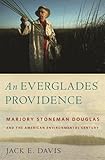An Everglades providence Marjory Stoneman Douglas and the American environmental century / Jack E. Davis.
Material type: TextSeries: Publication details: Athens : University of Georgia Press, (c)2009.Description: 1 online resource (xxv, 758 pages, 26. of plates) : illustrations, mapContent type:
TextSeries: Publication details: Athens : University of Georgia Press, (c)2009.Description: 1 online resource (xxv, 758 pages, 26. of plates) : illustrations, mapContent type: - text
- computer
- online resource
- 9780820346236
- Douglas, Marjory Stoneman
- Conservationists -- Florida -- Biography
- Feminists -- United States -- Biography
- Authors, American -- 20th century -- Biography
- Nature conservation -- Florida -- Everglades -- History
- Environmental degradation -- Florida -- History
- Wetland conservation -- Florida -- History
- Environmental policy -- Florida -- History -- 20th century
- Environmental policy -- United States -- History -- 20th century
- QH31 .E947 2009
- COPYRIGHT NOT covered - Click this link to request copyright permission: https://lib.ciu.edu/copyright-request-form
| Item type | Current library | Collection | Call number | URL | Status | Date due | Barcode | |
|---|---|---|---|---|---|---|---|---|
 Online Book (LOGIN USING YOUR MY CIU LOGIN AND PASSWORD)
Online Book (LOGIN USING YOUR MY CIU LOGIN AND PASSWORD)
|
G. Allen Fleece Library ONLINE | Non-fiction | QH31.645 (Browse shelf(Opens below)) | Link to resource | Available | ocn856934846 |
Browsing G. Allen Fleece Library shelves, Shelving location: ONLINE, Collection: Non-fiction Close shelf browser (Hides shelf browser)
Includes bibliographies and index.
No one did more than Marjory Stoneman Douglas to transform the Everglades from the country's most maligned swamp into its most beloved wetland. By the late twentieth century, her name and her classic work: The Everglades: River of Grass had become synonymous with Everglades protection. The crusading resolve and boundless energy of this implacable elder won the hearts of an admiring public while confounding her opponents, growth merchants intent on having their way with the Everglades. Douglas's efforts ultimately earned her a place among a mere handful of individuals honored as a namesake of a national wilderness area. In the first comprehensive biography of Douglas, Jack E. Davis explores the 108-year life of this compelling woman. Douglas was more than an environmental activist. She was a suffragist, a lifetime feminist and supporter of the ERA, a champion of social justice, and an author of diverse literary talent. She came of age literally and professionally during the American environmental century, the century in which Americans mobilized an unprecedented popular movement to counter the equally unprecedented liberties they had taken in exploiting, polluting, and destroying the natural world. The Everglades were a living barometer of America's often tentative shift toward greater environmental responsibility. Reconstructing this larger picture, Davis recounts the shifts in Douglas's own life and her instrumental role in four important developments that contributed to Everglades protection: the making of a positive wetland image, the creation of a national park, the expanding influence of ecological science, and the rise of the modern environmental movement. In the grand but beleaguered Everglades, which Douglas came to understand is a vast natural system that supports human life, she saw nature's providence.
COPYRIGHT NOT covered - Click this link to request copyright permission:
There are no comments on this title.







